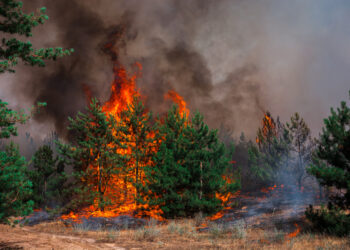By Jessianne Castle ENVIRONMENTAL AND OUTDOORS EDITOR
BOZEMAN – For husband and wife John Lind and Cheryl Conibear Lind of Bozeman, the silver-maned mountain deer—the caribou—has helped them to heal. In return, they hope to help restore the species, which has been extirpated from the Lower 48 and remains vulnerable in its more northern homelands.
During the 2019 Backcountry Hunters and Anglers Rendezvous in Boise, Idaho, from May 1-4, the couple and a cohort of fellow conservationists launched the Bozeman-based International Caribou Foundation, an organization seeking to raise awareness and provide on-the-ground measures to enhance caribou populations and protect habitat.
For the Linds, these efforts are personal.
It was on a trip to Alaska in 2016 while living in Hawaii when John and Cheryl became enamored with the gray ghost of the mountains. They visited a wildlife sanctuary in Fairbanks that’s home to a group of caribou, at a critical juncture in their own lives: they were searching for healing after watching their premature son pass away following 36 hours in the newborn intensive care unit.
Cheryl’s uterus had ruptured—a serious medical emergency for both mother and child. “Alex just lost too much blood, ” she said. “I was very, very lucky and very blessed to survive. It just opens your eyes to the fact that life is short.
“In that sense, [the foundation] has been very healing because we’re working on something that has a purpose and has given us a purpose,” she added.
Spurred by John’s personal desire to aid in positive change after serving five years in active duty with the Navy, the couple moved to Bozeman shortly after and he began volunteering with conservation organizations like the Rocky Mountain Goat Alliance and the Wild Sheep Foundation. When they realized there wasn’t an organization solely dedicated to caribou, the Linds recognized their calling.
“I want to make the world a better place for future generations,” John said, adding that he believes experiences with wild animals are an integral part of human happiness.
Caribou—or reindeer when referring to their European counterparts—are a high-elevation member of the deer species and are found in North America, Greenland, Russia and Scandinavia. Of 15 recognized caribou subspecies, the woodland caribou that once made its way into the northern forests around the Great Lakes and 49th Parallel in Washington, Idaho and Montana is particularly vulnerable as climate change and human development threaten their survival.
According to a 2018 report by the National Oceanic and Atmospheric Administration, caribou populations have declined by 56 percent worldwide in the past two decades, dropping from an estimated 4.7 million individuals to approximately 2.1 million.
In January of this year, the last caribou in the Lower 48, and the last surviving member of the woodland herd known as the South Selkirk, was captured in Idaho and moved to a maternal pen in Canada to be introduced into the Columbia North caribou herd.
The exact reason for the decline? The answer is proving complex.
“Caribou require big habitat. We haven’t offered them that in probably 80 years,” said biologist Bart George, who has worked for the Kalispel Tribe of Indians in Washington for eight years and is volunteering as the International Caribou Foundation conservation director.
George says that particular human development, including powerlines, highways and logging, as well as overall construction in the valleys, interrupts migration corridors and destroys the old-growth forests the gray ghosts need to survive. During the cold winter months, when other mammals drop down into lower elevation valleys and hills, caribou trek upward on mountains to avoid predators and search for arboreal lichen that grows in century-old forests.
Logging and other development transforms old forests into areas full of young growth—places George says elk and moose thrive for the abundance of browse. Large populations of elk and moose draw predators like wolves and mountain lions, bringing them into closer contact with caribou.
“Caribou have evolved with predators for 70,000 years. They have been around predators but aren’t predator-savvy like elk or deer,” George said. A caribou’s main line of defense, he added, is literal avoidance—using a landscape where almost nothing else can survive.
But with an increase of predators in historically old-growth forests alongside further development pressures, George says travel corridors are essential. “We can’t expect them to learn [new] predator avoidance over a couple generations.”
David Abate, the foundation’s marketing director, said climate change is also a threat. Warming temperatures create more rain-on-snow events, which forms a crust over the snow and makes it more difficult for ungulates to forage for food.
He added that the seasons are changing and have become out of sync with the caribou’s natural clock and migration patterns. Furthermore, sea ice is melting and cutting off access to migration corridors, he says, which limits range in places where the climate is already unforgiving.
Excited to be a part of something bigger than themselves, Abate and the Linds said their first initiative is to raise funds to support a captive breeding program for woodland caribou that is currently in the planning phases in British Columbia. After successfully rearing calves, the program would see to the reintroduction of the animals back into the wild.
The foundation will also inventory the different herds in North America by working with local biologists, and identify potential threats each herd faces so as to better develop a conservation strategy.
For now, the International Caribou Foundation will focus on the North American caribou populations, but one day the founders hope to be of assistance worldwide.
While the foundation supports regulated hunting as a potential management tool, John said he favors decisions that are in the best interest of the caribou. He added that he hopes to bridge gaps between non-hunting and hunting communities on the basis of conserving the species as shared common ground on which to build.
“At the end of the day, all I care about is [whether] this species [is] going to be around going forward.”
Visit internationalcariboufoundation.org for more information.













